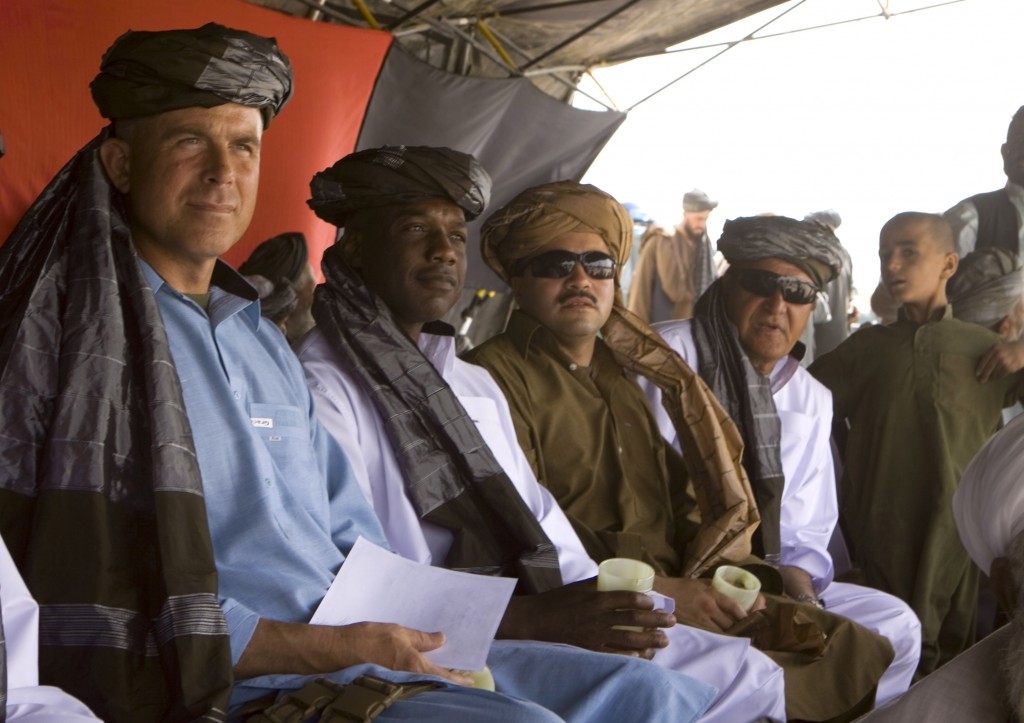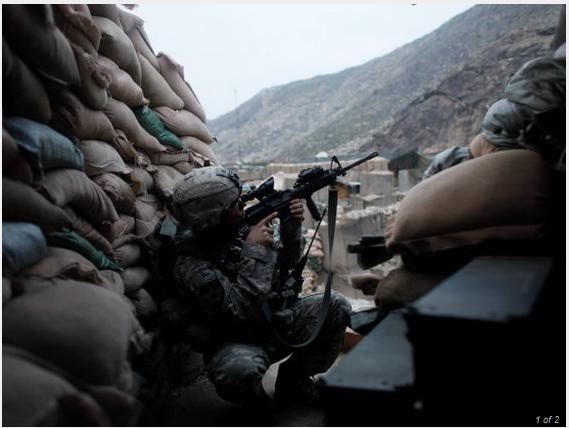Strange Counterinsurgency: The Marines Join Other Tribes!
BY Herschel SmithAfter seeing a few pictures in a commentary by Diana West, I felt that they were so laughable, clownish and ridiculous that they must be fabricated, so I set about to locate them. And locate them I did.
NAWA, Helmand Province, Islamic Republic of Afghanistan (From left to right) Lt . Col. Matt Baker, commanding officer of 1st Battalion, 3rd Marine Regiment, Sgt. Maj. Dwight D. Jones, sergeant major of 1/3, and Maj. Rudy Quiles, civil affairs team leader with 1/3, listen to Nawas district administrator speak March 21, during Islamic New Year celebration.
There are other pictures for your viewing. The pity with the story that these photographs tell is that there is nothing quite like it in U.S. Marine Corps history. The Marines have done counterinsurgency and stability operations for some 200 years now, and yet the history of these operations seems to have been all but forgotten. The most recent counterinsurgency success – the Anbar Province in Iraq – surely has been forgotten.
Note that I have been careful to point out the need for warrior scholars.
When Marine Lt. Col. Bill Mullen showed up at the city council meeting here Tuesday, everyone wanted a piece of him. There was the sheikh who wants to open a school, the judge who wants the colonel to be at the jail when several inmates are freed, and the Iraqi who just wants a burned-out trash bin removed from his neighborhood … Sunni sheikhs here want to create a relationship of true patronage with what they consider to be the biggest and most powerful tribe here: the Marines of Anbar Province.
This was Fallujah in 2007, and when the Marines of 2/6 entered in April, vehicle-borne IEDs were so prevalent that security couldn’t be enforced without draconian measures. The city was locked down, gates and checkpoints were put up, communities were walled off, a census was taken, biometrics were taken on the population (fingerprints and iris scans), and kinetic operations were conducted on the insurgents.
Within months, Fallujah was a different place. The Marines never relinquished their force protection, never jettisoned their uniforms, and always kept the upper hand with regards to the security of the city. But in Marjah where Marine lives were lost to take the area, the situation is degrading.
Just a few weeks since the start of the operation, the Taliban have “reseized control and the momentum in a lot of ways” in northern Marja, Maj. James Coffman, civil affairs leader for the Third Battalion, Sixth Marines, said in an interview in late March … Compensation helped turn the tide of insurgency in Iraq. But in Marja, where the Taliban seem to know everything — and most of the time it is impossible to even tell who they are — they have already found ways to thwart the strategy in many places, including killing or beating some who take the Marines’ money, or pocketing it themselves.
It isn’t counterinsurgency in Afghanistan that’s so different from Iraq – it’s the behavior of the Marines. Insurgents have always been difficult to separate from the population. That’s what makes it an insurgency. In the Helmand Province, the Marines are apparently attempting to join the tribes, even if for a very brief period of time. Note the irony. Rather than being the strongest tribe, they are showing deference to the weaker tribes, i.e., the ones who are losing to the Taliban.





